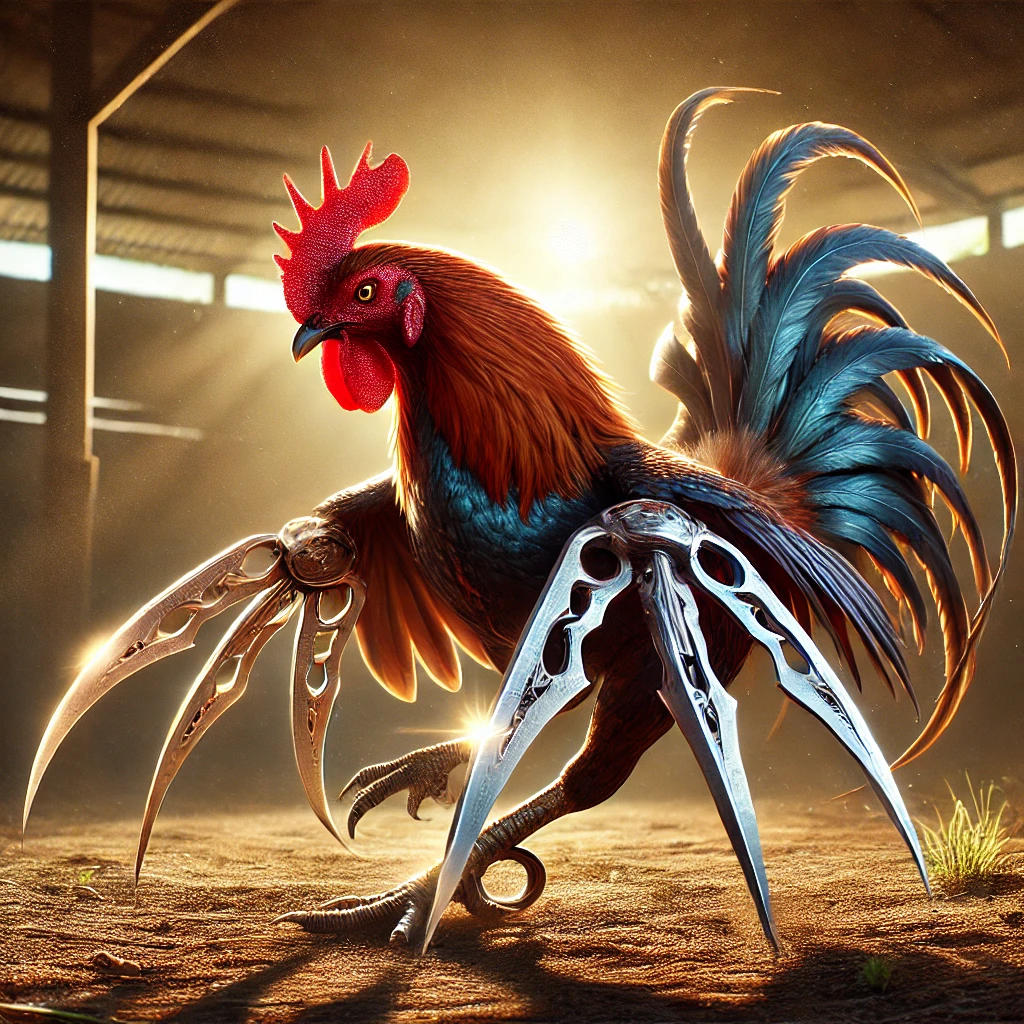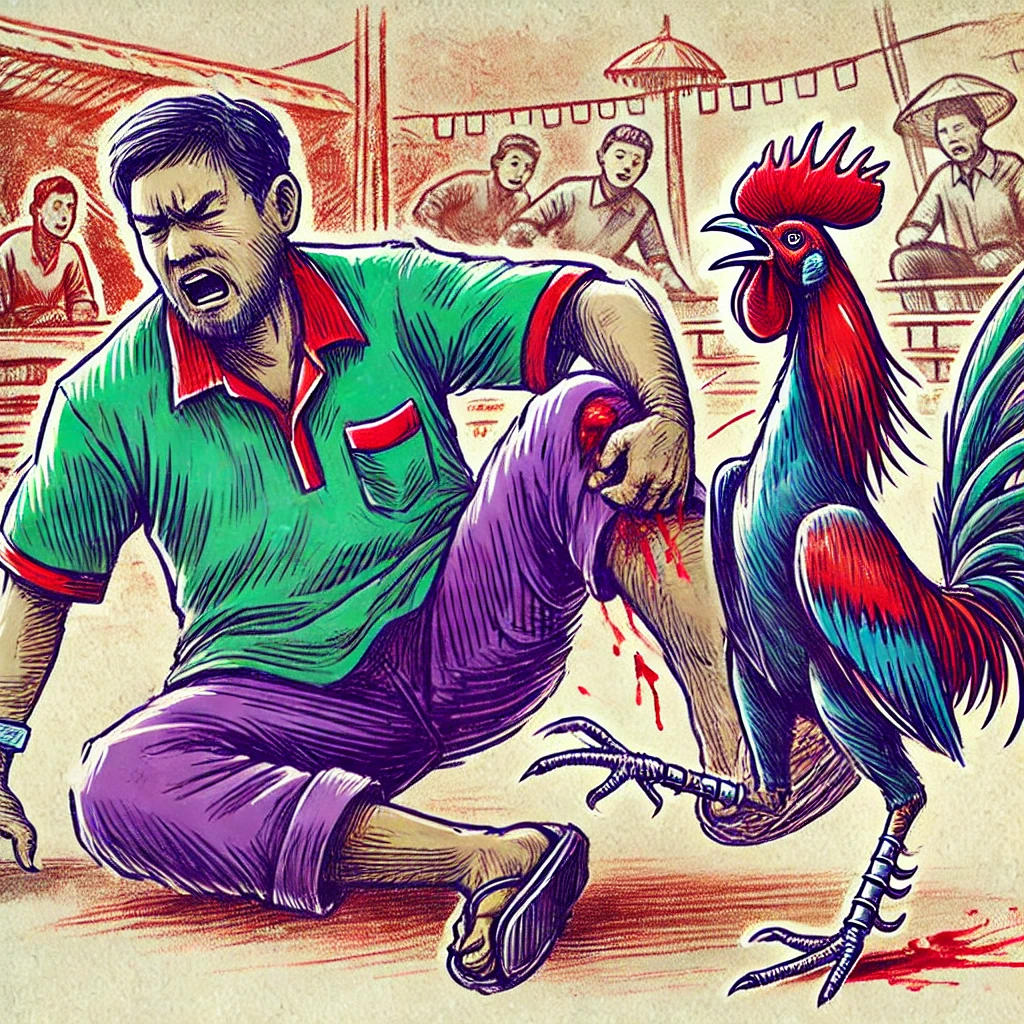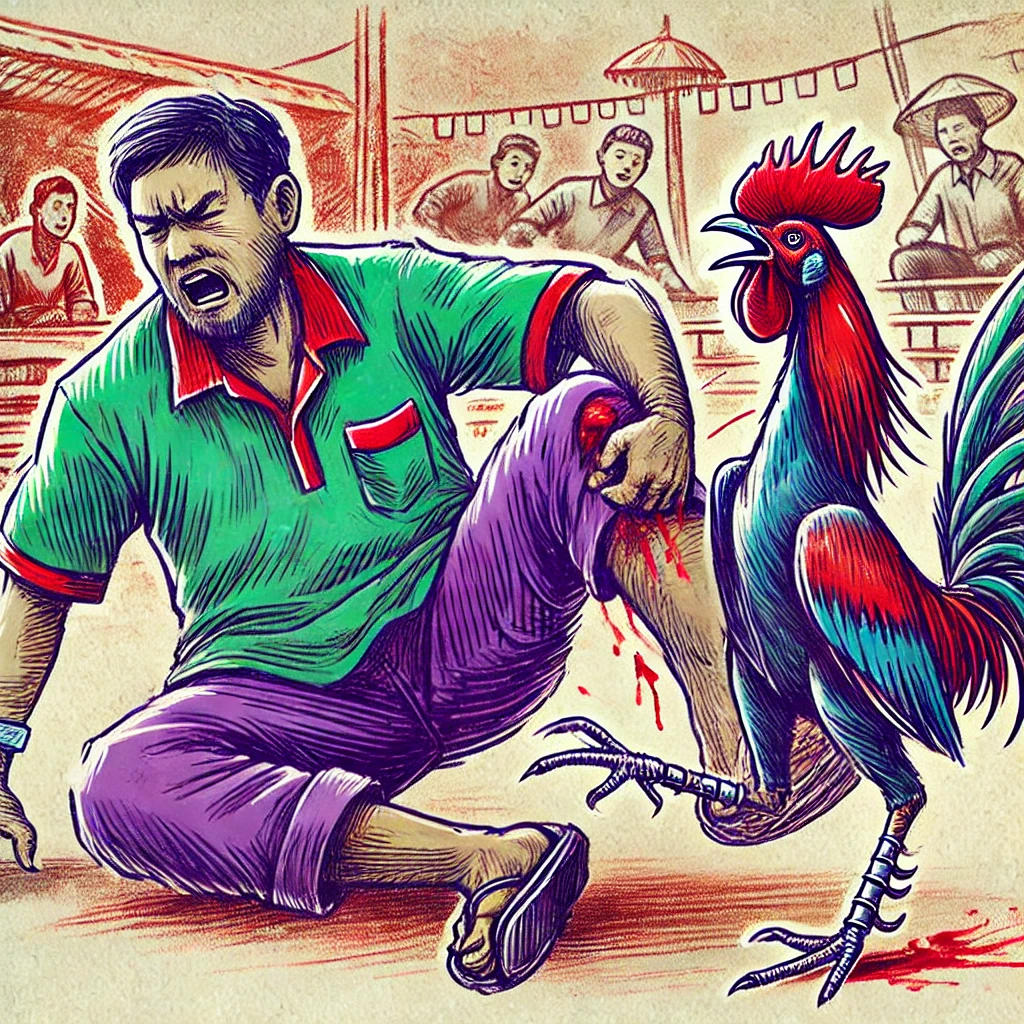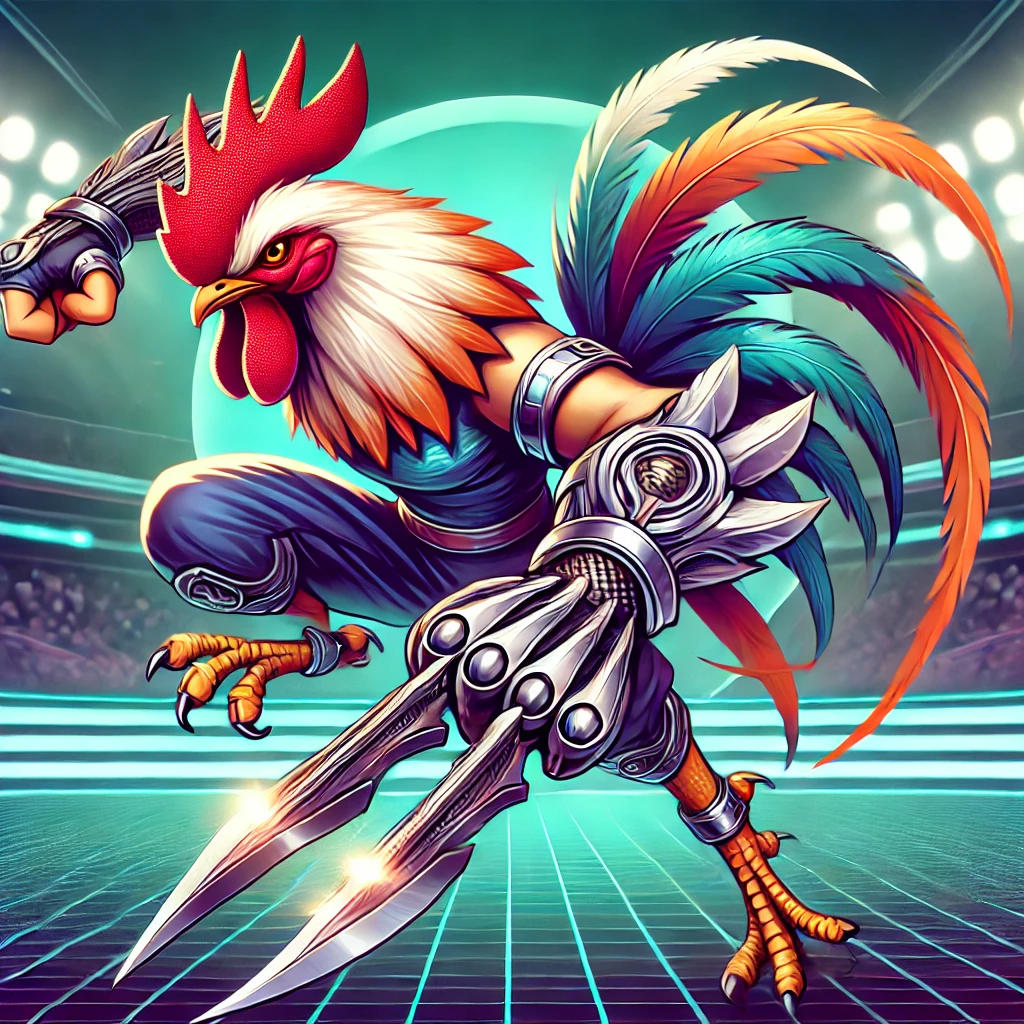In the Philippines, sabong—cockfighting—is a deeply rooted cultural tradition, loved for its excitement and competitive spirit. However, behind the adrenaline-fueled matches lies a significant risk that many fail to recognize. Recently, during a cockfighting event, a Taga-bitaw (chicken handler) named Ed suffered severe injuries when a cockfighting blade, known as a Tari, slashed through his skin, leaving him drenched in blood. This incident has once again raised concerns over the safety of those involved in sabong.

A Routine Match Turns Tragic
The incident occurred during a typical cockfighting match in a local arena. Ed, a seasoned handler responsible for releasing the roosters into the pit, had performed his task countless times before. However, on this day, fate had other plans.
As the match began, two roosters were released, lunging at each other with ferocious speed. Their legs, armed with sharp Tari blades, clashed mid-air, slicing through feathers and drawing blood. The crowd erupted in cheers and shouts as the fight intensified.
Suddenly, one of the roosters spun out of control and attacked Ed instead. In an instant, the Tari on the rooster’s leg tore into Ed’s arm and leg, leaving deep gashes. Blood spurted out uncontrollably, staining his clothes and pooling on the ground.

Witnesses described the chaotic scene:
“When he fell, the blood wouldn’t stop—it was like a faucet turned on. Everyone panicked. We didn’t know how to help him.”
Without any professional medical assistance on-site, bystanders attempted to stop the bleeding using makeshift bandages. But the injury was too severe. Ed quickly lost consciousness due to blood loss and was rushed to the hospital. Doctors later confirmed that the Tari had cut deep, nearly severing a major artery.
“Had it been any later,” a doctor warned, “he wouldn’t have survived.”
The Thrill and Danger of Sabong: A Double-Edged Sword
Sabong matches are renowned for their intensity, where roosters armed with razor-sharp Tari blades fight to the death. These blades, though small, are devastatingly lethal—capable of piercing flesh and causing fatal injuries in seconds. While the focus is often on the roosters, the danger to humans remains real and underacknowledged.
Ed’s incident is not isolated. Over the years, there have been similar cases of referees, handlers, and even rooster owners sustaining injuries during matches. A veteran referee in Manila recounted his harrowing experience:
“I was separating two fighting roosters when one turned and lunged at me. The Tari slashed my thigh. The pain was indescribable, and I couldn’t stop the bleeding.”
Some handlers have also been attacked while preparing or calming down overly aggressive roosters. These incidents highlight how unpredictable and dangerous the matches can be, especially when participants underestimate the weaponry involved.
Balancing Tradition and Safety: How Can Risks Be Reduced?
While sabong holds a special place in Philippine tradition, Ed’s experience underscores the need for improved safety measures in cockfighting arenas. Experts and advocates suggest the following steps to mitigate risks:
- Improved Medical Preparedness: Cockfighting arenas must have on-site medical personnel and first-aid equipment to address injuries promptly.
- Safety Training: Handlers, referees, and owners should receive proper training on managing roosters and avoiding Tari injuries.
- Blade Modifications: Research safer blade designs that minimize human injury without compromising the match.
- Strict Safety Regulations: Cockfighting organizers must enforce rules to ensure matches are conducted in a controlled, safe environment.
Ed’s Story: A Wake-Up Call
Currently recovering in the hospital, Ed shared his reflections on the incident:
“I never thought I’d be attacked like that. I love this job, but people need to realize how dangerous it can be. Safety should be a priority for everyone involved in sabong.”
His case serves as a wake-up call for those who participate in or organize sabong matches. While the Tari enhances the drama and spectacle of the sport, it is also a weapon capable of causing unimaginable harm.
Cultural Heritage vs. Safety: Can the Two Coexist?

Sabong is more than just a sport in the Philippines—it is a symbol of tradition, camaraderie, and pride. For many Filipinos, cockfighting is a way of life, an activity passed down through generations. However, Ed’s tragic accident reveals a hard truth: without proper precautions, this beloved tradition can turn deadly.
“We can cherish sabong as part of our heritage,” Ed said, “but we must also learn to protect ourselves and others. Life is precious, and no match is worth losing it.”
As the cockfighting community grapples with this incident, it becomes increasingly clear that safety must take center stage. By implementing better safety standards and fostering awareness, sabong can continue to thrive as a cultural tradition while minimizing the risks to those who dedicate themselves to the sport.
Ed’s story is a reminder to all: traditions can coexist with safety, but it requires collective effort and awareness. After all, no victory in the arena should come at the cost of human life.

[…] affects the respiratory tract but also damages the kidneys and reduces egg quality—a critical concern for breeders producing future sabong […]
[…] by his love for Sabong and cockfighting, Aljon established his own game farm, “Spoiled sa Misis,” located in San Antonio, […]
[…] The first step in RSL and S Game Farm’s process is the hardening phase for stags. After being selected from the range, stags are moved to hardening pens for 2 to 3 weeks. During this period, deworming with Vermex 40, bathing with Wash Out, and feeding with precise rations of 35–40 grams per meal help build their physique. Supplements like Thiabex and Lactamino further strengthen their bodies, ensuring they are primed for the intense demands of Sabong and high-stakes cockfighting. […]